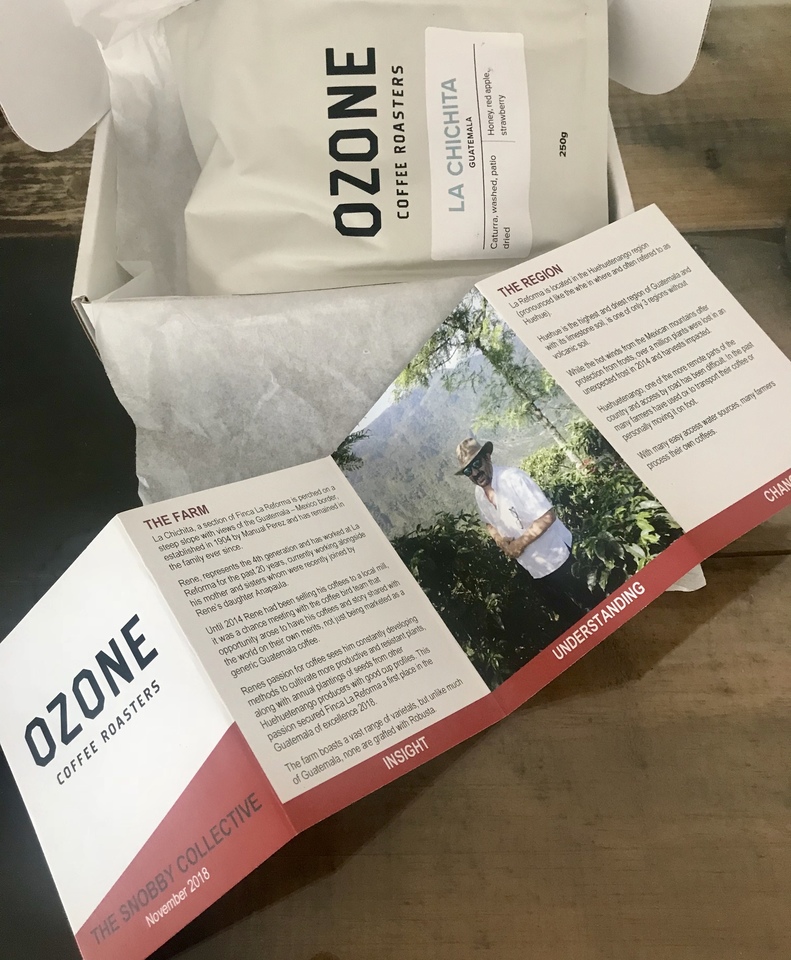November 2018
November 2018: The launch.
It was with great pride we partnered with Ozone Coffee Roasters to release our very first subscription box.
Together we told our first story of:
The Farm: Finca La Reforma
The Region: Huehuetenango - Guatemala
The Coffee: Caturra - Washed process.
The Farm:
La Chichita, a section of Finca La Reforma is perched on a steep slope with views of the Guatemala – Mexico border, established in 1904 by Manual Perez and has remained in the family ever since.
Rene, represents the 4th generation and has worked at La Reforma for the past 20 years, currently working alongside his mother and sisters whom were recently joined by Rene’s daughter Anapaula.
Until 2014 Rene had been selling his coffees to a local mill, it was a chance meeting with the coffee bird team that opportunity arose to have his coffees and story shared with the world on their own merits, not just being marketed as a generic Guatemala coffee.
Renes passion for coffee sees him constantly developing methods to cultivate more productive and resistant plants, along with annual plantings of seeds from other Huehuetenango producers with good cup profiles. This passion secured Finca La Reforma a first place in the Guatemala of excellence 2018.
The farm boasts a vast range of varietals, but unlike much of Guatemala, none are grafted with Robusta.
The Region:
La Reforma is located in the Huehuetenango region (pronounced like the whe in where and often refered to as Huehue).
Huehue is the highest and driest region of Guatemala and with its limestone soil, is one of only 3 regions without volcanic soil.
While the hot winds from the Mexican mountains offer protection from frosts, over a million plants were lost in an unexpected frost in 2014 and harvests impacted.
Huehuetenango, one of the more remote parts of the country and access by road has been difficult. In the past many farmers have used ox to transport their coffee or personally moving it on foot.
With many easy access water sources, many farmers process their own coffees.
The Coffee:
The coffee cherries are hand picked and sorted before being brought to the wet mill at La Reforma.
They are then immersed in the flotation tanks where the less dense “floaters” are scooped off. From here the cherries are pulped with water before being moved onto the fermentation tanks where they remain for 12-14 hours.
After reaching the desired fermentation point, the cherries are washed with clean water before being put back in to clean fermentation tanks for a further 12 hours. The coffee is then sent to the washing channels before the drying process begins.
The coffee parchment is laid on patios first thing in the morning and dries for 10-12 hours before being moved to the driers or “guardiolas”.
After 48-72 hours at 40 degrees Celsius the parchment reaches 10-12% moisture, upon which it is packaged before being stored in the warehouse.
To enjoy the full story of our next release, jump over to Subscriptions to secure your place and be sure to check out our Gift Boxes too.
|
© Copyright Derelict Coffee Roasters |

